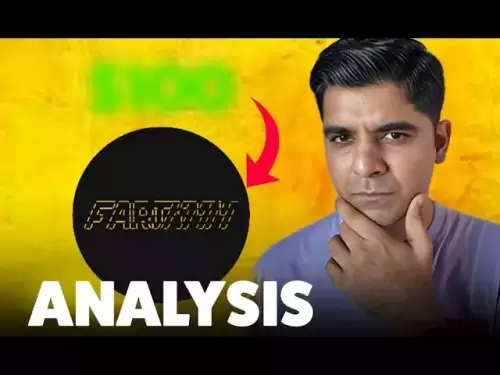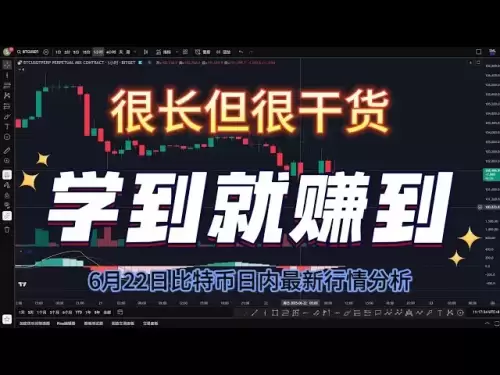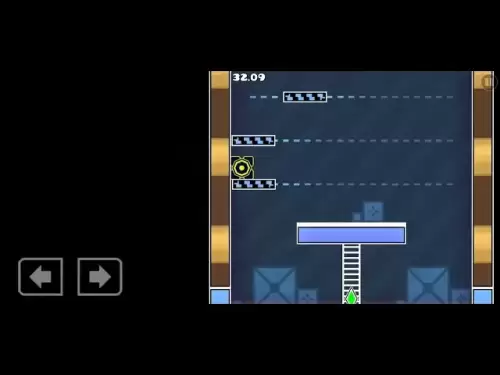-
 Bitcoin
Bitcoin $102,881.1623
-0.60% -
 Ethereum
Ethereum $2,292.8040
-5.48% -
 Tether USDt
Tether USDt $1.0004
0.02% -
 XRP
XRP $2.0869
-2.02% -
 BNB
BNB $634.6039
-1.35% -
 Solana
Solana $136.1527
-3.00% -
 USDC
USDC $1.0000
0.01% -
 TRON
TRON $0.2728
-0.45% -
 Dogecoin
Dogecoin $0.1572
-3.70% -
 Cardano
Cardano $0.5567
-5.07% -
 Hyperliquid
Hyperliquid $34.3100
-1.20% -
 Bitcoin Cash
Bitcoin Cash $462.5691
-2.33% -
 Sui
Sui $2.5907
-5.21% -
 UNUS SED LEO
UNUS SED LEO $8.9752
1.13% -
 Chainlink
Chainlink $12.0549
-4.93% -
 Stellar
Stellar $0.2381
-2.36% -
 Avalanche
Avalanche $16.9613
-3.47% -
 Toncoin
Toncoin $2.8682
-2.36% -
 Shiba Inu
Shiba Inu $0.0...01095
-3.70% -
 Litecoin
Litecoin $81.8871
-2.43% -
 Hedera
Hedera $0.1377
-5.36% -
 Monero
Monero $310.8640
-0.68% -
 Ethena USDe
Ethena USDe $1.0007
0.03% -
 Dai
Dai $1.0001
0.03% -
 Polkadot
Polkadot $3.3103
-5.19% -
 Bitget Token
Bitget Token $4.2168
-1.95% -
 Uniswap
Uniswap $6.4643
-8.14% -
 Pepe
Pepe $0.0...09329
-7.42% -
 Pi
Pi $0.5111
-5.23% -
 Aave
Aave $235.2340
-5.77%
How can the income from pledge mining be improved by choosing a low-competitive network?
Staking in low-competition Proof-of-Stake networks offers higher rewards but carries risks; thorough research into network security, decentralization, and project longevity is crucial before investing, and diversification across multiple networks mitigates risk.
Mar 03, 2025 at 10:19 am

How Can the Income from Pledge Mining Be Improved by Choosing a Low-Competitive Network?
Key Points:
- Understanding Network Competition: High competition in a Proof-of-Stake (PoS) or delegated Proof-of-Stake (dPoS) network directly impacts profitability from staking. More validators/delegators vying for rewards means a smaller share for each participant.
- Identifying Low-Competition Networks: Research is crucial. Analyzing metrics like the number of active validators, the total staked amount, and the average block reward helps identify less saturated networks. Consider network growth potential, as a currently low-competition network might become more competitive in the future.
- Risk Assessment of Low-Competition Networks: While lower competition promises higher rewards, smaller networks often carry higher risks. Security, decentralization, and project longevity need thorough evaluation before committing significant capital.
- Diversification Strategy: Spreading your staked assets across multiple low-competition networks mitigates risk and optimizes potential returns. This strategy reduces reliance on any single network's performance and safeguards against unforeseen events.
- Technical Expertise and Infrastructure: Successful staking requires technical understanding. Setting up and maintaining nodes, monitoring network activity, and understanding consensus mechanisms are crucial for maximizing returns and avoiding potential pitfalls.
Improving Staking Income by Choosing a Low-Competition Network:
- Understanding Network Competition and its Impact on Rewards:
The profitability of staking in a Proof-of-Stake (PoS) or delegated Proof-of-Stake (dPoS) blockchain network is heavily influenced by the level of competition among validators or delegators. In a highly competitive network, a large number of participants are vying for the same limited pool of block rewards. This directly translates to a smaller share of rewards for each individual participant. For example, imagine a network where 100 validators are sharing a total block reward of 100 coins. Each validator would receive only 1 coin per block. However, if the same network only had 10 validators, each validator would receive 10 coins per block, a significant difference in profitability. Therefore, selecting a network with lower validator participation leads to a higher percentage of the block rewards for each individual stake. It's crucial to remember that the "reward" itself isn't solely determined by the number of validators; the total amount of cryptocurrency generated through block rewards also plays a significant role. A network with a lower reward per block, even with fewer validators, might not be as lucrative as a network with higher rewards, despite higher competition. Therefore, a comprehensive analysis of both the number of validators and the total block reward is essential for a complete understanding of network competitiveness. Furthermore, consider the inflation rate of the cryptocurrency. A network with high inflation might generate large block rewards, but the value of those rewards could be diluted over time, impacting overall profitability. This complex interplay of factors underscores the importance of thorough research before committing to a staking strategy. Analyzing historical reward data, future projections, and the overall health of the network are essential components of a successful staking venture.
- Identifying Low-Competition Networks: A Deep Dive into Research Methodology:
Identifying low-competition networks requires meticulous research and analysis. It's not merely a matter of finding networks with fewer validators; a holistic approach is crucial. Start by exploring reputable cryptocurrency data aggregators and explorers. These platforms often provide key metrics such as the total number of active validators, the total amount of cryptocurrency staked, and the average block reward. Examine these metrics over time to identify trends and gauge the network's growth rate. A network with a consistently low number of validators and a stable or growing total staked amount suggests a potentially lucrative opportunity. However, be wary of networks with extremely low validator counts, as this might indicate a lack of decentralization or a small, potentially vulnerable community. Look beyond raw numbers. Delve into the technical aspects of the network's consensus mechanism. Understanding the mechanics of how block rewards are distributed and the requirements for becoming a validator is critical. Some networks might have higher barriers to entry, which can naturally limit competition. Research the network's governance model and its community engagement. A healthy, active community usually translates to a more robust and sustainable network. Conversely, a dormant or disengaged community can signify underlying issues that could impact the long-term viability of the project and consequently, your staking returns. Consider the project's roadmap and its future development plans. A network with ambitious goals and a clear path to growth has a higher chance of attracting more users and validators in the future, potentially increasing competition over time. This prospective increase in competition should be factored into your long-term staking strategy. Ultimately, identifying low-competition networks is an ongoing process requiring continuous monitoring and adaptation to market changes.
- Assessing the Risks Associated with Low-Competition Networks:
While low competition offers the allure of higher staking rewards, it's essential to acknowledge the inherent risks associated with less established networks. Security is paramount. Smaller networks might have less robust security measures compared to larger, more established ones. This increased vulnerability makes them potentially attractive targets for malicious actors aiming to exploit weaknesses for personal gain. Before investing in a low-competition network, thoroughly investigate its security protocols, its track record, and any known vulnerabilities. Decentralization is another critical factor. A network with a small number of validators might be more susceptible to centralization, potentially compromising its resilience against attacks or manipulation. Assess the distribution of staked tokens and the geographical diversity of validators. A concentrated validator base raises concerns about potential collusion or control by a small group of individuals or entities. Project longevity is also a key consideration. Smaller networks might lack the resources, community support, or developer activity to sustain long-term growth and stability. Research the project's team, its funding, and its overall trajectory. Assess the level of community engagement and the frequency of updates and improvements. A project with a strong team, a clear roadmap, and active community participation is more likely to withstand market fluctuations and maintain its relevance. Furthermore, consider the liquidity of the cryptocurrency. In a low-competition network, trading volume might be low, making it challenging to sell your staked tokens quickly if needed. Low liquidity increases the risk of significant price fluctuations and makes it harder to exit your position without incurring substantial losses. A comprehensive risk assessment is crucial before committing to staking in any network, especially those with lower competition.
- Implementing a Diversification Strategy for Optimal Returns and Risk Mitigation:
Diversification is a cornerstone of any successful investment strategy, and staking is no exception. Instead of concentrating your staked assets in a single network, even a low-competition one, spread your investment across multiple networks. This approach significantly reduces the impact of any single network's performance on your overall returns. If one network experiences a security breach, a decline in price, or a sudden increase in competition, the impact on your portfolio will be less severe than if all your assets were staked in that single network. When diversifying, consider both low-competition and more established networks. This blended approach balances the potential for higher rewards from less competitive networks with the stability and security of larger, more mature ones. The optimal allocation between these two types of networks depends on your individual risk tolerance and investment goals. You might allocate a larger portion of your portfolio to low-competition networks if you have a higher risk tolerance and are seeking potentially higher rewards, while allocating a smaller portion to established networks for stability and security. The process of diversification involves continuous monitoring and adjustment. As network dynamics change, so should your allocation strategy. Regularly review the performance of each network, assess its ongoing competitiveness, and rebalance your portfolio accordingly. This adaptive approach helps you optimize your returns while effectively managing risk. Remember that diversification is not just about the number of networks; it's also about diversifying the types of cryptocurrencies you stake. Consider staking different cryptocurrencies with varying characteristics, such as different consensus mechanisms, use cases, and market capitalization. This further reduces the impact of any single asset's price fluctuations on your overall portfolio performance.
- Mastering the Technical Aspects of Staking and Node Management:
Successfully engaging in staking, especially in less established networks, often requires a degree of technical expertise. Understanding the underlying technology and the network's consensus mechanism is crucial for maximizing your returns and avoiding potential pitfalls. This involves understanding concepts such as block production, reward distribution, and validator selection processes. Depending on the chosen network, you might need to set up and maintain your own node. This requires technical skills and infrastructure, including a reliable server with sufficient bandwidth and storage capacity. Properly configuring and maintaining your node ensures uninterrupted participation in the network and consistent reward generation. Monitoring network activity is also crucial. Staying informed about network health, validator performance, and any potential issues is essential for timely intervention and risk mitigation. Using monitoring tools and staying updated on network announcements can help identify and address problems promptly. Furthermore, understanding the security implications of running a node is crucial. Protecting your node from malicious attacks, ensuring data integrity, and implementing robust security measures are vital for safeguarding your assets and maintaining your participation in the network. It's important to note that running a node isn't always necessary for staking. Many networks allow delegating your cryptocurrency to existing validators, simplifying the process and reducing the technical requirements. However, even when delegating, understanding the validator's performance, reputation, and security practices is critical for maximizing your returns and minimizing risk. The level of technical expertise required for successful staking depends on your chosen strategy and the specific network you're engaging with.
FAQs:
Q: What are the risks associated with choosing a low-competition network for staking?
A: Risks include: lower network security due to smaller community size, higher potential for centralization, reduced liquidity making it difficult to quickly sell your staked tokens, and greater uncertainty regarding the long-term viability of the project.
Q: How can I research and identify low-competition networks?
A: Research involves analyzing metrics like the number of active validators, total staked amount, average block reward, and assessing the network's overall health, community engagement, and project roadmap through reputable data aggregators and explorers. Look for networks with fewer validators but not so few as to raise concerns about centralization.
Q: Is running my own node necessary for staking in a low-competition network?
A: Not always. Many networks allow delegation to existing validators, simplifying the process. However, running your own node can provide greater control and potentially higher rewards, but requires technical expertise.
Q: How can I diversify my staking portfolio to mitigate risks?
A: Diversify by staking across multiple low-competition and established networks and different cryptocurrencies. Regularly rebalance your portfolio based on network performance and market changes.
Q: What technical skills are needed for successful staking in a low-competition network?
A: The required skills depend on your chosen strategy. Running a node requires significant technical expertise in server management and network security. Delegating requires less technical expertise but still requires understanding the network and chosen validator.
Disclaimer:info@kdj.com
The information provided is not trading advice. kdj.com does not assume any responsibility for any investments made based on the information provided in this article. Cryptocurrencies are highly volatile and it is highly recommended that you invest with caution after thorough research!
If you believe that the content used on this website infringes your copyright, please contact us immediately (info@kdj.com) and we will delete it promptly.
- Trump, Musk, and Dogecoin: A Meme Coin Rollercoaster in the Making
- 2025-06-22 22:25:12
- AI, DeFi, and Tokens: Navigating the Next Wave in Crypto with $OZ and Beyond
- 2025-06-22 22:25:12
- Bitcoin, Strategy, Purchase: How Savvy Investors Are Stacking Sats and Real Estate
- 2025-06-22 22:35:13
- Crypto, MiCA, and Trump: A New York Minute on Global Shifts
- 2025-06-22 22:35:13
- Solana Layer-2 Heats Up: Is the Solaxy Presale the Next Big Thing?
- 2025-06-22 20:25:13
- MAGACOIN's Ascent: Following Shiba Inu's Growth Path in 2025?
- 2025-06-22 20:25:13
Related knowledge
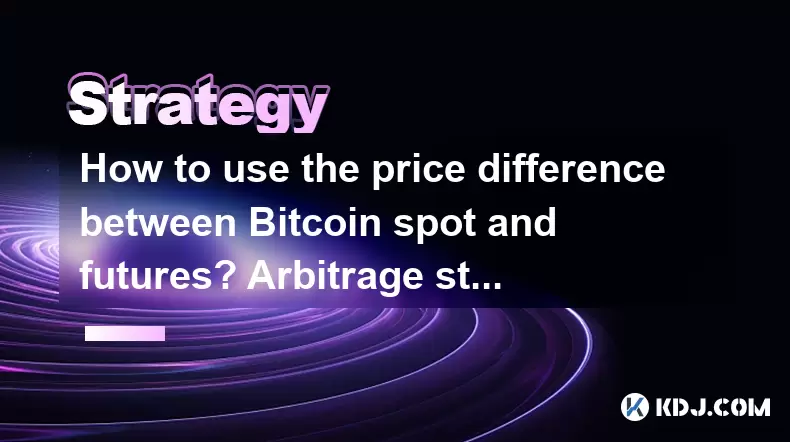
How to use the price difference between Bitcoin spot and futures? Arbitrage strategy
Jun 20,2025 at 02:56pm
Understanding Bitcoin Spot and Futures MarketsTo effectively leverage arbitrage opportunities between Bitcoin spot and futures markets, it's essential to understand the fundamental differences between these two types of markets. The spot market refers to the direct buying and selling of Bitcoin for immediate delivery at the current market price. In cont...

How to make profits from high-frequency cryptocurrency trading? Sharing core skills
Jun 19,2025 at 05:07pm
Understanding High-Frequency Cryptocurrency TradingHigh-frequency trading (HFT) in the cryptocurrency market involves executing a large number of trades at extremely fast speeds, often within milliseconds. This method relies on small price discrepancies across exchanges or within a single exchange’s order book. Traders use complex algorithms and ultra-l...
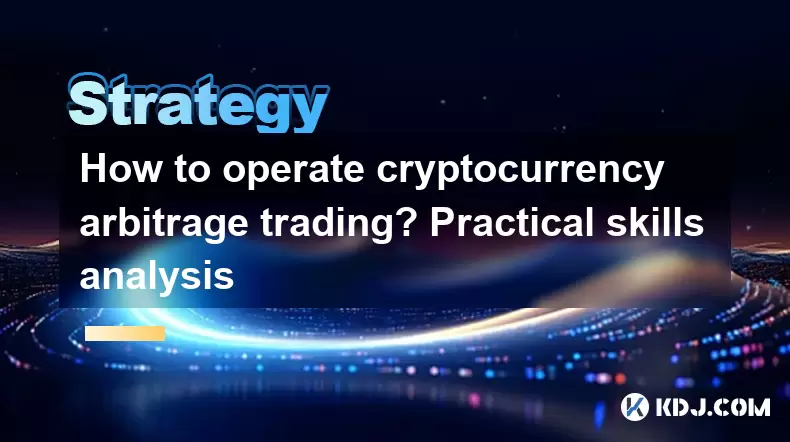
How to operate cryptocurrency arbitrage trading? Practical skills analysis
Jun 20,2025 at 05:57pm
Understanding Cryptocurrency Arbitrage TradingCryptocurrency arbitrage trading refers to the practice of taking advantage of price differences for the same digital asset across different exchanges. Due to market inefficiencies, crypto prices can vary significantly on platforms like Binance, Coinbase, and Kraken, even within short timeframes. Traders buy...
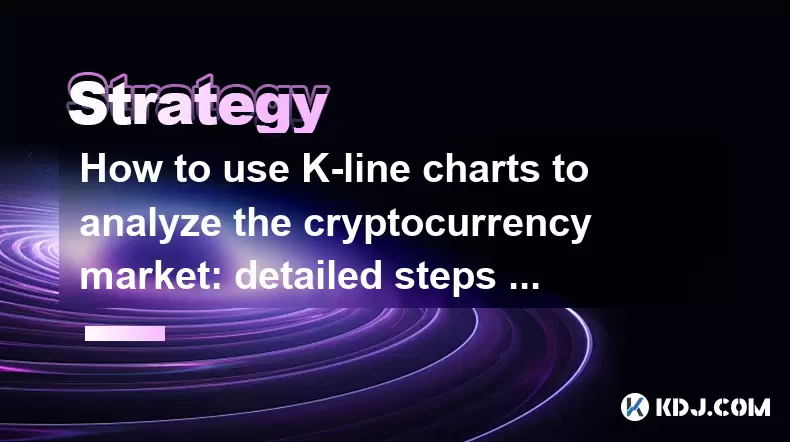
How to use K-line charts to analyze the cryptocurrency market: detailed steps and common misunderstandings
Jun 16,2025 at 01:42pm
Understanding the Basics of K-line Charts in Cryptocurrency TradingK-line charts, also known as candlestick charts, are one of the most widely used tools for analyzing price movements in financial markets, including cryptocurrencies. These charts provide a visual representation of price action over specific time intervals and help traders make informed ...

Cryptocurrency K-line chart technical analysis manual: Learn these methods to increase your chances of making a profit
Jun 11,2025 at 11:21pm
Understanding the Basics of K-line ChartsK-line charts, also known as candlestick charts, are one of the most widely used tools in cryptocurrency trading. Each K-line represents a specific time period and provides information about the open, high, low, and close prices during that interval. The body of the candle shows the relationship between the openi...
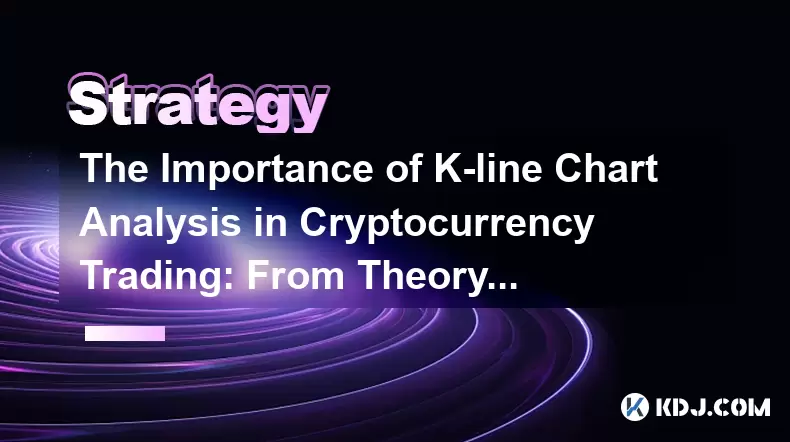
The Importance of K-line Chart Analysis in Cryptocurrency Trading: From Theory to Practical Cases
Jun 11,2025 at 04:56pm
Understanding the Basics of K-line ChartsK-line charts, also known as candlestick charts, are a visual representation of price movements over specific time intervals. Each K-line encapsulates four critical data points: the opening price, closing price, highest price, and lowest price within a given timeframe. These charts originated in Japan during the ...

How to use the price difference between Bitcoin spot and futures? Arbitrage strategy
Jun 20,2025 at 02:56pm
Understanding Bitcoin Spot and Futures MarketsTo effectively leverage arbitrage opportunities between Bitcoin spot and futures markets, it's essential to understand the fundamental differences between these two types of markets. The spot market refers to the direct buying and selling of Bitcoin for immediate delivery at the current market price. In cont...

How to make profits from high-frequency cryptocurrency trading? Sharing core skills
Jun 19,2025 at 05:07pm
Understanding High-Frequency Cryptocurrency TradingHigh-frequency trading (HFT) in the cryptocurrency market involves executing a large number of trades at extremely fast speeds, often within milliseconds. This method relies on small price discrepancies across exchanges or within a single exchange’s order book. Traders use complex algorithms and ultra-l...

How to operate cryptocurrency arbitrage trading? Practical skills analysis
Jun 20,2025 at 05:57pm
Understanding Cryptocurrency Arbitrage TradingCryptocurrency arbitrage trading refers to the practice of taking advantage of price differences for the same digital asset across different exchanges. Due to market inefficiencies, crypto prices can vary significantly on platforms like Binance, Coinbase, and Kraken, even within short timeframes. Traders buy...

How to use K-line charts to analyze the cryptocurrency market: detailed steps and common misunderstandings
Jun 16,2025 at 01:42pm
Understanding the Basics of K-line Charts in Cryptocurrency TradingK-line charts, also known as candlestick charts, are one of the most widely used tools for analyzing price movements in financial markets, including cryptocurrencies. These charts provide a visual representation of price action over specific time intervals and help traders make informed ...

Cryptocurrency K-line chart technical analysis manual: Learn these methods to increase your chances of making a profit
Jun 11,2025 at 11:21pm
Understanding the Basics of K-line ChartsK-line charts, also known as candlestick charts, are one of the most widely used tools in cryptocurrency trading. Each K-line represents a specific time period and provides information about the open, high, low, and close prices during that interval. The body of the candle shows the relationship between the openi...

The Importance of K-line Chart Analysis in Cryptocurrency Trading: From Theory to Practical Cases
Jun 11,2025 at 04:56pm
Understanding the Basics of K-line ChartsK-line charts, also known as candlestick charts, are a visual representation of price movements over specific time intervals. Each K-line encapsulates four critical data points: the opening price, closing price, highest price, and lowest price within a given timeframe. These charts originated in Japan during the ...
See all articles





















